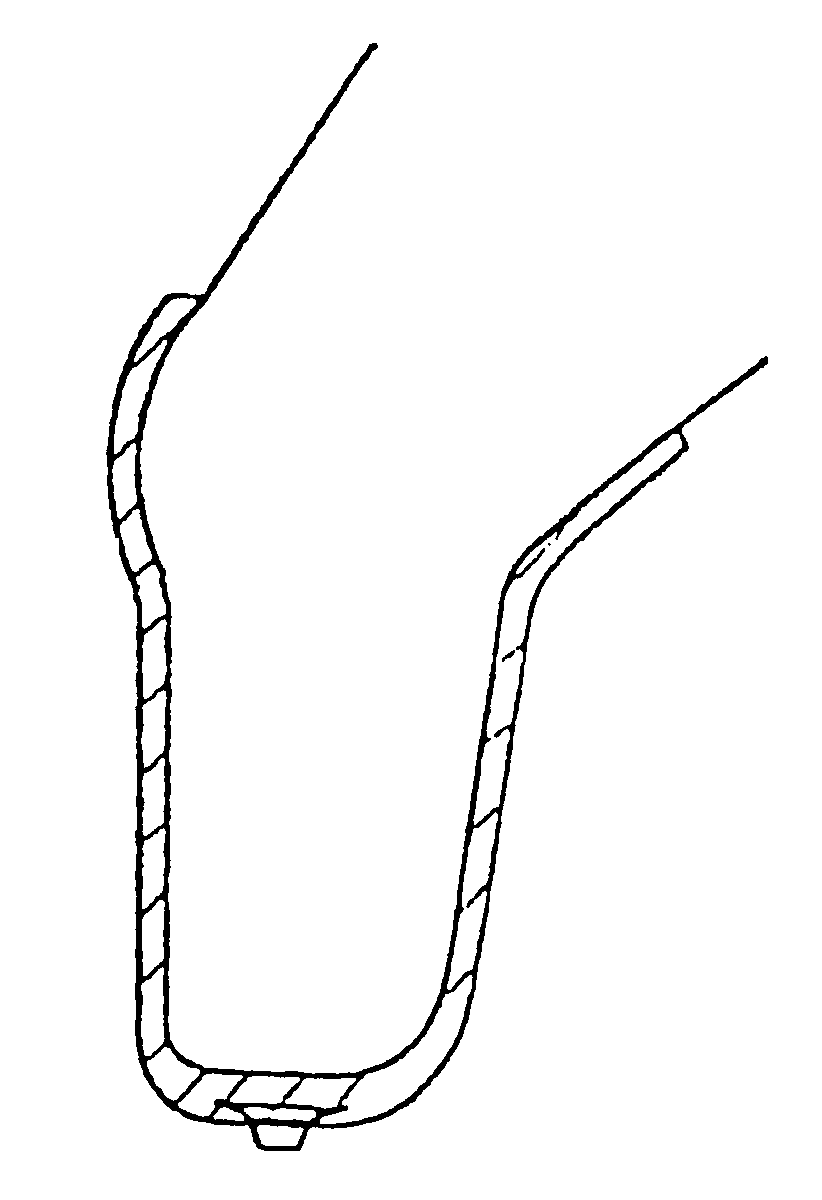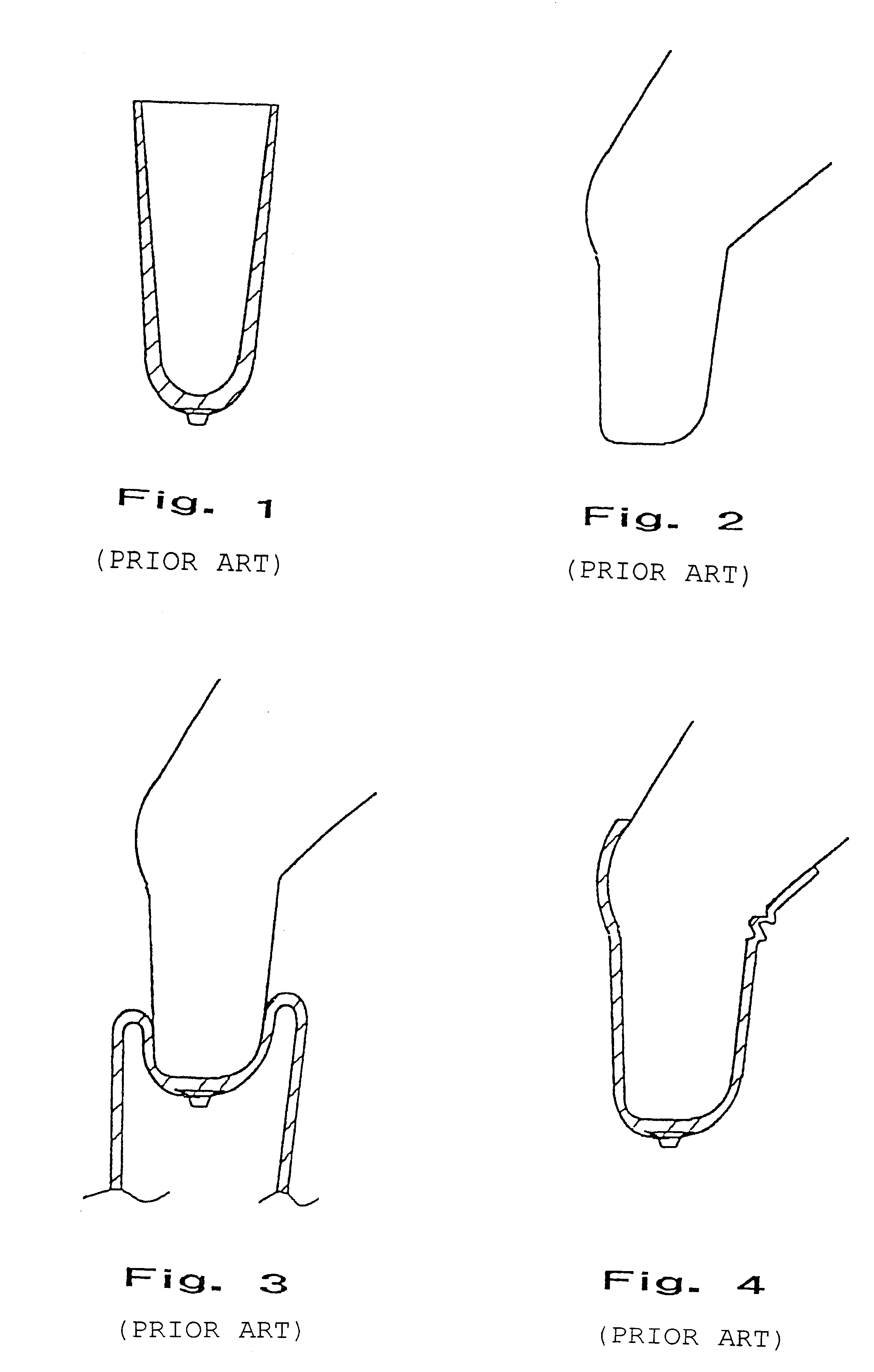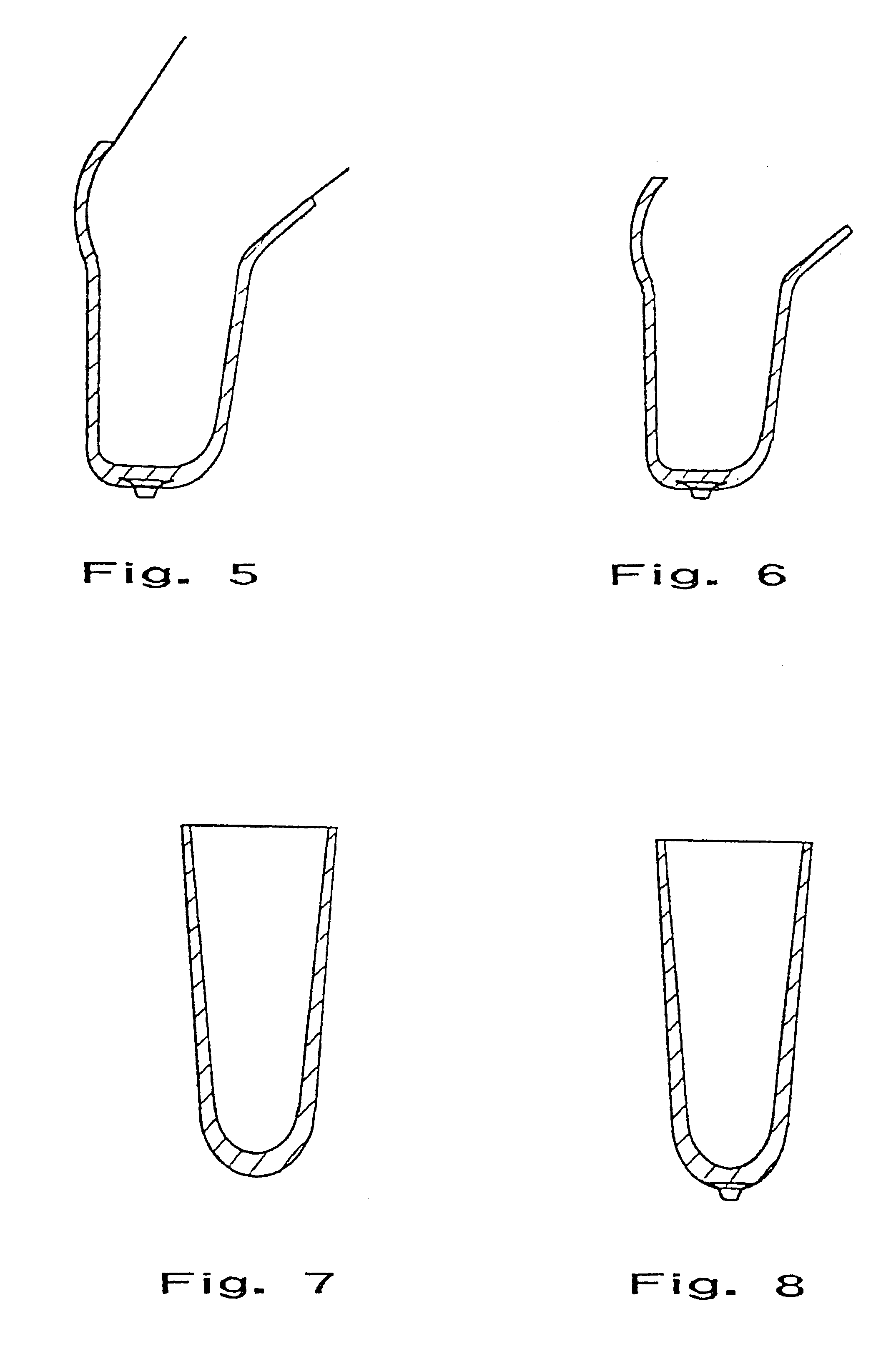Method for creating a sleeve member attached to a body portion
a technology of body parts and sleeves, applied in the field of prosthetic sleeves, can solve the problems of increasing pressure stress at dangerous spots, unable to see the stomach through the sleeves, and unable to decide if the sleeves are correctly adapted
- Summary
- Abstract
- Description
- Claims
- Application Information
AI Technical Summary
Benefits of technology
Problems solved by technology
Method used
Image
Examples
Embodiment Construction
A conical elastic sleeve member similar to the one demonstrated in FIG. 1 is rolled, according to the method of the invention, over a copy of the stump from the amputated extremity. The copy in the example has a shape, demonstrated in FIG. 2, corresponding to a knee with a lower leg stump. The sleeve member according to the invention consists of a thermoplastic elastic material which is characterized by being able to be formed by means of heat. A preferred polymeric material as such is transparent, soft and kind to the skin and elastic and for instance a thermoelastic based on a Styrene-Ethylene / Butadiene-Styrene Block-copolymer (SEBS) and intended for injection moulding and extrudation, as for instance the TPE material DRYFLEX.RTM. 500120 from Nolato Elastoteknik, Torekov, Sweden. The copy of the extremity having the sleeve member of the invention applied is heated in a suitable manner, for instance in an oven. When the sleeve member on the copy of the stump is heated it will form ...
PUM
| Property | Measurement | Unit |
|---|---|---|
| Temperature | aaaaa | aaaaa |
| Flexibility | aaaaa | aaaaa |
| Shape | aaaaa | aaaaa |
Abstract
Description
Claims
Application Information
 Login to View More
Login to View More - R&D
- Intellectual Property
- Life Sciences
- Materials
- Tech Scout
- Unparalleled Data Quality
- Higher Quality Content
- 60% Fewer Hallucinations
Browse by: Latest US Patents, China's latest patents, Technical Efficacy Thesaurus, Application Domain, Technology Topic, Popular Technical Reports.
© 2025 PatSnap. All rights reserved.Legal|Privacy policy|Modern Slavery Act Transparency Statement|Sitemap|About US| Contact US: help@patsnap.com



